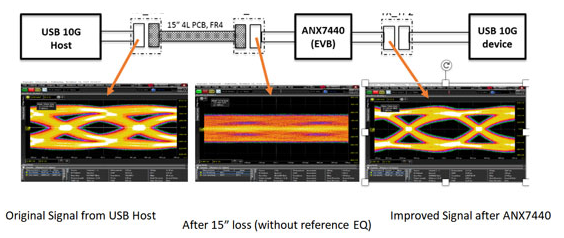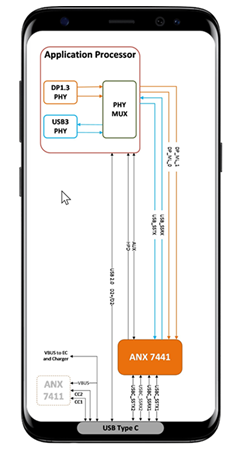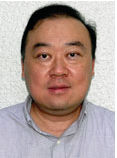Re-Timers Ensure High Quality 10G Signals
Re-Timers Ensure High Quality 10G Signals
August 13th, 2018
By Joseph Juan, Analogix Semiconductor
Designers need to keep up with the challenges as smartphones adopt high-speed USB Type-C.
Universal Serial Bus (USB) is an industry standard maintained by the USB Implementers Forum (USB-IF). It defines cables, connectors and protocols for connection, communication, and power supply between personal computers and their peripheral devices. The newest USB standard is USB 3.2, which is a boost in data transfer bandwidth up to 10 Gbps. The new SuperSpeed USB specification in Generation 2 of USB 3.1 delivers improved data encoding and efficiency, doubling the speed of the Generation 1 standard (5Gbps).
The DisplayPort standard is an innovative, packetized digital interface for high-resolution video and audio that was developed by the Video Electronics Standards Association (VESA). DisplayPort can transmit audio and video simultaneously. Each video color channel can range from six to sixteen bits of depth. Up to eight audio channels of uncompressed audio can be sent, which makes DisplayPort a very high bandwidth “pipe” of up to 8.1 gigabits per second (DP 1.4), per lane totaling up to 32.4 gigabits per second.
The convergence of higher speed data rates and a common embedded clock architecture helps to transfer high amounts of data, audio, and video across the channel over differential signal pairs.
USB Type-C, also known as USB-C, supports the latest USB 3.2 standard. Full-featured USB Type-C cables can support up to 10Gbps of data throughput, following the USB 3.2 Gen2 standard, which is twice the USB 3.2 Gen1 rates. Full-featured USB Type-C cables can support up to 8.1Gbps per lane and up to 4 lanes of display throughput, following the DisplayPort v1.4 standard.
All of these capabilities are negotiated when devices are connected.
Signal Integrity Challenges over High-Speed Signals
Transmitting high-speed data over a cable or printed-circuit-board (PCB) path will significantly attenuate and distort the signal. Transmission paths are usually transmission lines that introduce channel insertion losses of 20 dB or more within a 10- to 12-inch system trace. Reflections, crosstalk, jitter, and dispersion harm signal integrity and eye margin. With increased trace or cable distance, signal attenuation or rounding takes place. Such distortions result in bit errors or the inability to recover the transmitted signal on the far end or the receiver side.
Hence, serial interfaces with data rates of 8 Gbps or more require some assistance from repeaters, which can filter out the incoming jitter (random and deterministic) while remaining compliant to its specifications for all functional purposes. Placed in the middle of the channel to compensate channel loss, repeaters fall within one of two categories: re-timer or re-driver. A re-timer equalizes the upstream channel signal, recovers the clock using clock and data recovery (CDR), and generates a digital stimulus that is transmitted to the downstream channel.
A re-driver equalizes the upstream channel signal and re-transmits it to the downstream channel. The output signal is continuously driven by the input signal. A re-driver does not have a CDR, and no re-timing is performed.
Signal Conditioning
Notebooks and Desktop PCs with USB Type-C and USB Type-A Connectors
With signal speeds increasing across all interconnect protocols, the higher speeds are outstripping the CPU’s capability to drive the entire channel, especially when major CPU vendors continue to “shrink” their microchips to reduce power and stay cost competitive. The result is that the length to maintain a compliant channel shrinks considerably.
In its “Design Guideline Update for USB 3.1 Gen2 Implementation on CNL and CFL Platforms” Intel recommends that OEMs evaluate re-timer based active mux solutions for USB-C connectors and re-timer solutions for USB Type-A connectors to achieve better signal integrity and JTOL margins. Re-timer implementations must be compliant to the USB 3.1 specification Appendix E, capable of 23dB loss compensation at USB 3.1 Gen 2 mode.
The USB 3.2 specification defines two types of re-timers:
Separate Reference clock Independent of SSC (SRIS) re-timer, which refers to a re-timer implementation that has its transmit clock derived from a local reference clock and is independent of the recovered clock at its receiver.
Bit-Level Re-timer (BLR), which refers to a re-timer implementation that has its transmit clock derived from the recovered clock at its receiver, except during part of link training.
Smartphones
Repeaters are not only used on big PCB board and long traces. They are also being used on very small platforms, such as smartphones, for a few reasons:
- The CPU chipset can’t provide enough output drive across the channel.
- Part of the channel runs across a “flex” PCB that has large signal loss.
- A cable attached to the connector adds further length to the channel.
- EMI issues prevent high signal strength near the antenna.
Cables
When placing a repeater at the connector on the chassis side, or in the connector shell, thinner gauge cables and longer cables can be utilized. Active cables have repeaters mounted on a tiny PCB within the connector shell. Active cables for interfaces such as PCI Express, USB, SATA, and SAS are available from vendors in the market.
High Throughput Signals without Compromising Overall Platform Performance and Signal Integrity
Now available on the market are re-timers which support both SRIS and BLR architecture and recover up to 23dB loss.
Analogix offers a family of 10Gbps re-timers for DisplayPort Over USB-C for notebooks, desktop PCs, and 2-in-1 convertible laptops. Its ANX74xx USB-C re-timer solution is the first to pass interoperability at USB-IF and VESA plug-tests, meeting the stringent requirements of the PC industry.
The ANX74xx family ensures high-throughput signals across PC motherboards and USB/DisplayPort cables rates without compromising the overall platform performance and signal integrity. Recently Analogix performed a test measurement using the following set up:
- USB host: Gigabyte GB-BSi5HA-6200
- Insertion loss board: 15 inches (USB-C to micro-USB, FR-4)
- ANX7440-EVB
- USB device: SanDisk SSD Plus
- Oscilloscope DS0Z334A (33GHz)
Figure 1 shows the measurement locations and results.

Figure. 1: Signal conditioning measurement location and results obtained during a test in Analogix’s lab
DisplayPort Daisy Chaining, USB-3 Daisy Chaining, and Interoperability
Analogix implemented a complete DisplayPort re-timer with Link Training Tuneable PHY Repeater (LTTPR) mode and Transparent mode with AUX snooper. Thus, daisy chaining of multiple re-timers through active cable is guaranteed to interoperate.
Using SRIS and BLR architectures, Analogix also implemented a pure re-timer on the USB-3 path. The product complies with USB3.2 Appendix E (23dB loss compensation) and works seamlessly through the daisy chaining of multiple re-timers.

Figure 2: An integrated re-timer for next generation smartphones supporting high bandwidth DisplayPort 1.4 at 8.1 Gbps
Power consumption is lowest in the active, idle and disabled modes. Analogix uses an internal DC-DC converter with external inductor to achieve low power consumption.
By using crystal as an external clean reference clock, the Analogix re-timers support 23dB loss compensation, as per the USB3.2 Appendix E spec, helping to guarantee interoperability through the daisy chaining of up to four re-timers.
Re-timers for Smartphones and VR Active Cables
At MWC 2018 Analogix announced the ANX7441 (Figure 2), the first integrated re-timer for next generation smartphones supporting high bandwidth DisplayPort 1.4 at 8.1 Gbps, as well as USB 3.1 Gen2 10 Gbps data rates over long and thin cables. As smartphones adopt high-speed USB-C, the ANX7441 allows next generation application processors to support very high data transfer rates over the USB-C connector, making them ideal for VR applications.
For additional cable lengths, Analogix’s ANX7440 re-timer recovers and reinstates high-speed signals at both ends of active cables spanning from 2, 5, and up to 7 meters. This allows low-cost cable solutions to meet the performance and compliance requirements of high-speed DisplayPort and USB 3.1 signals.
Smartphone designs using application processors without an integrated USB-C power delivery (PD) port controller can use the ANX7411 companion, which integrates the logic to manage cable attach and detach, orientation, and role detection, providing full USB PD 3.0 support.
Analogix is working closely with major CPU and AP vendors to make sure that signal conditioning products meet the link-training requirements and offer the desired compliant channel. Joint simulation models further help the design plan and improve success when using re-timers on a high-speed platform.


Joseph Juan is Sr. Marketing Manager of USB-C, USB/DisplayPort High-speed Switch, Signal Integrity, and Interface products at Analogix Semiconductor, Inc. Prior to joining Analogix, Juan was the Sr. Product Marketing Manager at Pericom in charge of USB, PCIe/PCI, and SATA High-speed SI & Interconnect Products. Juan holds a B.S. degree in Computer Science & Mathematics and an M.S. degree in Computer Engineering from University of British Columbia.
Resources
Videos illustrating the ANX7440 daisy chaining capabilities:
https://www.youtube.com/watch?v=0c4i6vko7zI
https://www.youtube.com/watch?v=smu8KZG7WhY
